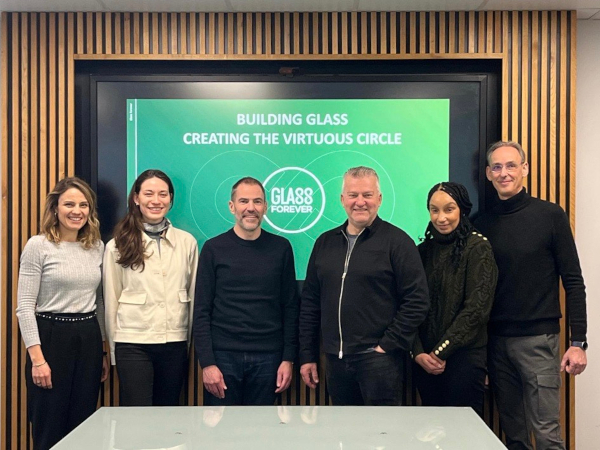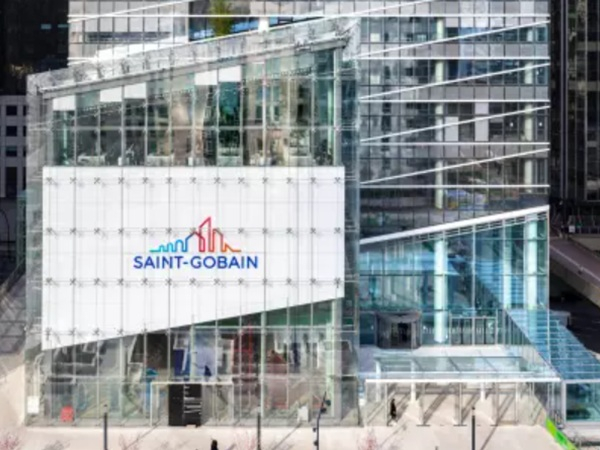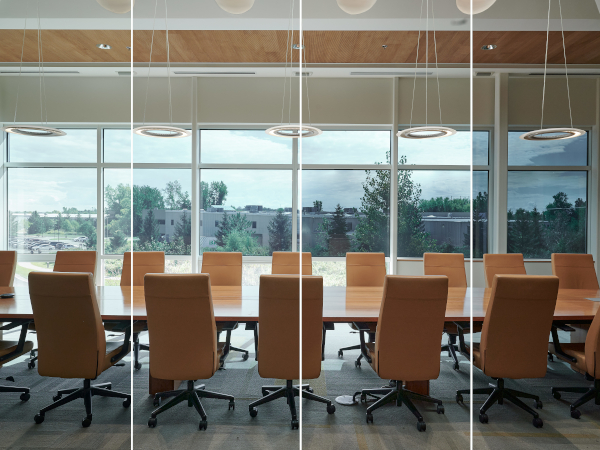Date: 21 May 2015
Previously, the Museum featured a three-story, single-paned glass curtain wall overlooking Boston’s storied Charles River basin that did not block harsh afternoon sunlight into the main lobby.“It was overpowering at times,” said Paul Ippolito, the Museum’s director of facilities. “Low angle sun, particularly in the winter months, poured in directly through the curtain wall as well as reflected off the river deep into the lobby of the Museum.As a result the visitors’ experience was compromised.”
The Museum commissioned Cambridge Seven Associates to do a glazing study to evaluate potential alternatives to solve the problem. The firm assessed everything from mechanical roller shades and retractable covers to canopies and architectural light shelves.
“Nearly all of the options we explored to solve this problem would have resulted in compromises to performance or the visitor experience,” said Matthew Wasdyke, architect at Cambridge Seven Associates. “The Museum has a strong connection to the Charles River that it wanted to preserve. Those solutions not only impeded that connection, but also didn’t necessarily increase the curtain wall’s overall thermal efficiency.”
Because SageGlass can darken or clear automatically in response to changing light conditions, it eliminated the glare problem without compromising the iconic views of the Charles River. And, by letting sunlight in on cool days and blocking it on hot days, SageGlass dramatically reduces energy demand.
The SageGlass curtain wall uses light sensors to trigger variable tinting throughout the day, with manual override controls for when the museum wishes to darken or clear the windows for special events. The curtain wall was configured with three different horizontal zones to enable customized daylight blending.
“Our number one goal is to improve the visitor experience. With SageGlass, we were able to eliminate glare from the sun that diminished the visitor experience, while preserving the outdoor view and reducing energy consumption,” Ippolito said.
By taming the sun’s glare, SageGlass has also enabled the Museum to utilize the indoor space and the connection to the river in new ways. A new exhibit opening in early 2016, Yawkey Gallery on the Charles River, will allow visitors to explore how nature and technology are intertwined along the Charles River Watershed in the lobby where the previous curtain wall would have made the exhibit impossible.
“Using state-of-the-art glazing technology was also in keeping with the Museum’s mission to play a leading role in transforming the nation’s relationship with science and technology,” Ippolito said. “We try to seek out and test newer building and energy technologies whenever possible. SageGlass complements our mission nicely.”
For more information about SageGlass, visit booth #4051 at AIA Conference 2015, May 14-16, in Atlanta.
About SageGlass
SageGlass®, a product of Saint-Gobain, is advanced dynamic glass that can be electronically tinted or cleared to optimize daylight and improve the human experience in buildings. SageGlass manages the sunlight and heat that enter a building, significantly reducing energy consumption while improving people’s comfort and well-being. It can reduce a building’s cooling load by 20% and HVAC requirements up to 30%. It is a smarter, more elegant solution than conventional sun controls such as mechanical window shades, blinds and louvers. With SageGlass you can control sunlight and glare without shades or blinds while maintaining the view and connection to the outdoors. SageGlass is manufactured in Faribault, Minn., in the heart of “the Silicon Valley of the window industry,” and is a wholly owned subsidiary of Saint-Gobain of Paris, the world’s largest building materials company.
For more information visit:
Website: www.sageglass.com
Twitter: twitter.com/Sage_Glass
Facebook: Facebook.com/SageGlass
LinkedIn: linkedin.com/company/sage-electrochromics-inc.
YouTube: Youtube.com/SAGEElectrochromics
About Saint-Gobain in North America
Saint-Gobain has its North American headquarters in Valley Forge, Pennsylvania. As the world leader in sustainable habitat, Saint-Gobain is committed to inventing solutions to help professionals and communities around the world build and renovate comfortable, healthy, economical and energy-efficient buildings. The company has more than 250 locations in North America and approximately 15,000 employees. In the United States and Canada, Saint-Gobain reported sales of approximately $6.2 billion in 2014.
Recognized as a 2009 and 2010 ENERGY STAR Partner of the Year by the U.S. Environmental Protection Agency, Saint-Gobain earned the 2011, 2012, 2013, 2014 and 2015 ENERGY STAR Sustained Excellence Award, the highest level of recognition for outstanding contributions to protecting the environment through energy efficiency. For more information about Saint-Gobain in North America, visit www.saint-gobain-northamerica.com and connect with the company on Facebook and Twitter.
About Saint-Gobain
In 2015, Saint-Gobain is celebrating its 350th anniversary, 350 reasons to believe in the future. Backed by its experience and its capacity to continuously innovate, Saint-Gobain, the world leader in the habitat and construction market, designs, manufactures and distributes high-performance and building materials providing innovative solutions to the challenges of growth, energy efficiency and environmental protection. With 2014 sales of $54.6 billion, Saint-Gobain operates in 64 countries and has over 180,000 employees. For more information about Saint-Gobain, visit https://www.saint-gobain.com/en and the twitter account @saintgobain












Add new comment